Auto Parts Categories and Applications: Understanding the Essential Components of Automotive Systems
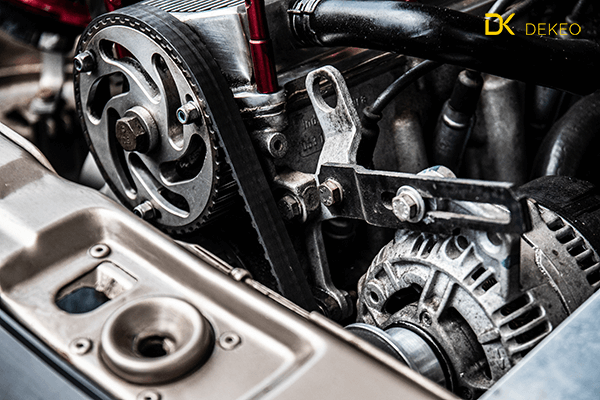
The automotive industry comprises a wide range of auto parts, each with specific functions and applications. Understanding the various categories of auto parts, their components, and the automotive systems they belong to is essential for businesses involved in the auto parts sector. This article provides a detailed overview of auto parts categories, their components, and their applications in different types of vehicles.
Engine components are the heart of a vehicle, ensuring optimal performance and efficiency. Some key engine components include:
- Spark plugs: Responsible for igniting the air-fuel mixture in the combustion chamber.
- Fuel injectors: Deliver precise amounts of fuel to the engine.
- Timing belts: Coordinate the opening and closing of engine valves with the movement of pistons.
- Radiators: Help maintain the engine's temperature by dissipating heat.
These components are crucial for the proper functioning of various engine types, such as gasoline, diesel, and electric.
- Transmission System
The transmission system transfers power from the engine to the wheels, allowing the vehicle to move. Key components of the transmission system include:
- Clutches: Enable smooth gear shifting and power transfer between the engine and transmission.
- Gearboxes: Contain various gears that enable the vehicle to operate at different speeds.
- Drive shafts: Transmit torque from the transmission to the wheels.
- Differentials: Distribute power evenly to the wheels, allowing them to rotate at different speeds when needed.
Transmission components are applicable to manual, automatic, and continuously variable transmissions (CVTs).
- Suspension and Steering Systems
Suspension and steering systems provide stability, control, and comfort while driving. Essential components of these systems include:
- Shock absorbers: Absorb and dampen road shocks to ensure a smooth ride.
- Springs: Support the vehicle's weight and help maintain proper ride height.
- Control arms: Connect the wheels to the vehicle's frame and enable vertical movement.
- Tie rods: Transmit steering input from the steering gear to the wheels.
These components are vital for various vehicle types, including passenger cars, trucks, and off-road vehicles.
The braking system is crucial for vehicle safety, allowing the driver to slow down or stop the vehicle. Key braking system components include:
- Brake pads: Create friction with the brake rotors to slow down or stop the vehicle.
- Brake rotors: Disc-shaped components that brake pads press against to create friction.
- Brake calipers: House the brake pads and apply force to the brake rotors.
- Brake master cylinders: Convert brake pedal input into hydraulic pressure for the brake system.
Braking system components are applicable to various brake types, such as disc, drum, and regenerative braking systems.
- Electrical System
The electrical system powers various vehicle functions, such as lighting, ignition, and infotainment. Key electrical system components include:
- Alternators: Generate electricity to power the vehicle's electrical components and charge the battery.
- Batteries: Store electrical energy for starting the engine and powering electrical accessories.
- Starters: Engage the engine's flywheel to initiate the combustion process.
- Wiring harnesses: Transmit electrical signals and power throughout the vehicle.
These components are essential for all types of vehicles, regardless of their powertrain.
In conclusion, understanding the various categories of auto parts, their components, and their applications in different types of vehicles is vital for businesses involved in the auto parts sector. By staying informed about the essential components of automotive systems, businesses can better serve their customers and maintain a competitive edge in the industry.
- Posted in Automotive, Autoparts, Import, Industry, Supplier
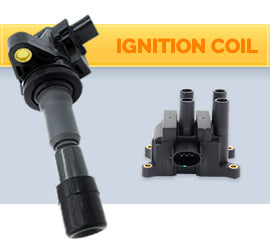
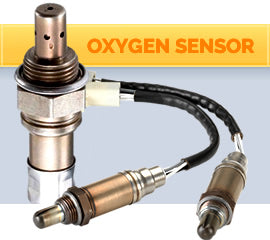
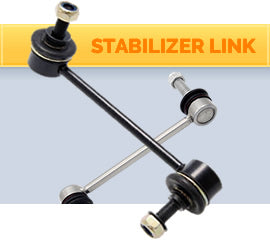
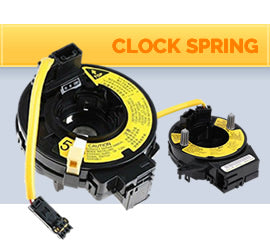




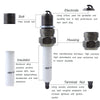



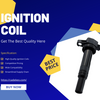
You stated this perfectly!
online casino nederland ideal https://combatcasino.info/review-las-atlantis/ are there any legitimate online casinos
Thanks. Valuable stuff.
arizona casino online https://combatcasino.info/real-money-online-casino-indiana/ legal gambling online casino
Nicely put, Thank you.
live casino gambling online https://buckscasino.info/states/ online casino with bank transfer
Enhancing Machinery Maintenance with Balanset-1A: Field Balancing ServicesWatch YouTube Short
In the world of machinery maintenance and repair, achieving optimal performance and longevity is crucial. One of the key processes in ensuring this is rotor balancing, a practice that reduces vibration, extends equipment life, and enhances efficiency. Enter the Balanset-1A by Vibromera, a sophisticated tool designed to streamline and perfect the rotor balancing process.
Understanding the Rotor Balancing Process with Balanset-1AThe Balanset-1A offers a comprehensive solution for rotor balancing, involving several meticulous steps from preparation to correction. Here’s a closer look at the process:
Preparation of EquipmentStart by positioning the vibration sensors perpendicular to the rotor’s axis of rotation. Secure a laser tachometer on a magnetic stand, aiming it at a reflective tape attached to the rotor’s pulley. Connect the sensors to the Balanset device and link it to a laptop via USB. Launch the Balanset software and select the two-plane balancing mode.
Initial Vibration MeasurementPrior to balancing, weigh a test load and document its weight and installation radius. Run the rotor to measure the initial vibration levels, determining the amplitude and phase of the inherent imbalance.
Balancing in the First PlaneInstall the test load in the first balancing plane, corresponding to the location of the first sensor, and operate the rotor to measure vibration levels. A change of at least 20% in amplitude or phase indicates partial correction of imbalance.
Balancing in the Second PlaneNext, transfer the test load to the second plane where the second sensor is installed. Run the rotor again and take measurements. These data points will aid the software in calculating the precise position and weight of corrective loads.
Correcting ImbalanceBased on the collected data, the Balanset software will suggest corrective weights and their installation angles for both planes. Remove the test load and prepare the corrective weights according to the software’s recommendations, installing them at the specified angle relative to the test load’s original position.
Verification and CompletionFinally, operate the rotor to verify the balance. If the vibration is reduced to an acceptable level, the process is complete. If further correction is needed, the software will provide additional guidance on where and how much weight to install.
Features and Benefits of Balanset-1AThe Balanset-1A boasts several features that make it an invaluable tool for field balancing:
Compact and portable, perfect for on-site work. Intuitive software with step-by-step instructions. Functions as both a vibrometer and balancing device. High precision measurements suitable for various industrial applications. Customizable options for specific tasks and requirements. Easy to learn and use, even for beginners in vibration diagnostics. Supports serial balancing for repetitive tasks. Can be used without a tachometer for quick diagnostics. ConclusionWith a competitive price of 1751 euros, the Balanset-1A offers an excellent balance of cost and quality. Its design caters to both large-scale industrial operations and smaller workshops, making it a smart investment for anyone looking to enhance their machinery maintenance and repair processes.
Contact Information:
For more information about our Balanset balancing devices and other products, please visit our website: https://vibromera.eu.
Subscribe to our YouTube channel, where you will find instructional videos and examples of completed work: https://www.youtube.com/@vibromera.
Stay updated with our latest news and promotions on Instagram, where we also showcase examples of our work: https://www.instagram.com/vibromera_ou/.
Buy Balanset-1A on Amazon
Balanset-1A OEM on Machinio
vibration monitoring equipment
Vibration monitoring equipment plays a significant role in enhancing the efficiency and longevity of machinery across various industries. The Balanset-1A, a state-of-the-art portable balancer and vibration analyzer, embodies the essence of this technology. It is specifically engineered to perform dynamic balancing on a vast array of rotors, including those found in crushers, fans, mulchers, augers on combines, shafts, centrifuges, and turbines. Its versatility makes it an essential tool for maintenance professionals aiming to ensure optimal performance in their operations.
Equipped with two channels, the Balanset-1A is designed for dynamic balancing in two planes. This advanced feature allows for highly precise balancing that mitigates vibration issues, optimizing machinery performance across multiple applications. Its comprehensive capabilities make it an invaluable asset for industries reliant on various rotating equipment.
The Balanset-1A includes a broad range of functionalities necessary for rotor balancing and vibration analysis. One of its key features is the Vibrometer Mode, which accurately measures rotational speed (RPM) and determines the phase angle of vibration signals. This precision is critical in diagnosing issues and facilitating corrective actions to enhance machine reliability.
In addition, the Balanset-1A provides detailed analysis through its FFT (Fast Fourier Transform) Spectrum capability. This feature delivers a granular view of the frequency spectrum of vibration signals, enabling users to identify and address specific vibration characteristics that could indicate underlying problems within the machinery.
Monitoring overall vibration levels is another essential function of the Balanset-1A. By tracking these values, operators can gain insights into the condition and performance of machinery, allowing for proactive maintenance practices that prevent costly failures. The Measurement Log feature further supports this by storing measurement data for future analysis, providing a historical perspective on equipment performance and facilitating trends tracking.
The balancing modes available in the Balanset-1A are designed to meet diverse operational requirements. The device supports both single-plane balancing and two-plane balancing, accommodating different rotor types and configurations. The Polar Graph feature visually depicts the imbalance, guiding technicians in accurately placing weights to achieve optimal balance.
This intelligent system also offers a Tolerance Calculator, which adheres to ISO 1940 standards to compute acceptable balancing tolerances. This adherence to international standards ensures that equipment consistently operates within acceptable limits, minimizing unplanned downtime and maintenance costs.
Moreover, the Balanset-1A supports balancing grinding wheels using three counterweights, highlighting its multifunctional design. The system also offers various charting capabilities, providing visual representations of overall vibration data, harmonic frequencies, and fundamental frequency components. These visual tools make it easier for users to interpret data and make informed decisions based on the condition of their equipment.
In terms of specifications, the Balanset-1A is equipped with two vibration sensors (vibro accelerometers) with cable lengths of 4 meters, along with an optional extension of 10 meters. The Laser Tachometer facilitates precise speed measurement within a distance range of 50 to 500 mm, enhancing the accuracy of the overall monitoring process. These components work seamlessly to provide reliable and actionable insights.
The software integration of the Balanset-1A is another key facet of its design. It allows users to measure vibration, calculate the necessary corrections, and analyze phase angles effectively. The USB interface module enables easy connection to a PC, providing a user-friendly interface for data management and reporting.
This portable vibration monitoring equipment is not just about functionality; it also prioritizes user convenience. The ability to archive previous balancing sessions and generate detailed reports of balancing outcomes empowers users to streamline their maintenance processes. This capability not only enhances workflow efficiency but also fosters a culture of continuous improvement within organizations that utilize the equipment.
Furthermore, with options to work in both imperial and metric systems, the Balanset-1A ensures compatibility with varying industrial standards globally. This adaptability is crucial for businesses operating on an international scale, where equipment must align with different measurement systems.
The importance of vibration monitoring equipment like the Balanset-1A cannot be overstated. In an era where industrial efficiency is paramount, having reliable tools for monitoring and analyzing machinery performance is essential. The Balanset-1A provides a comprehensive solution for businesses seeking to optimize their operations, reduce maintenance costs, and enhance the lifespan of their equipment.
In summary, the Balanset-1A portable balancer and vibration analyzer represents a major advancement in vibration monitoring equipment. Its multifaceted capabilities make it an invaluable asset for any industry that relies on rotating machinery. By ensuring precise dynamic balancing and offering in-depth analysis of vibration signals, the Balanset-1A helps maintain operational efficiency, reduce downtime, and uphold the highest standards of performance across diverse applications.
Embracing such advanced vibration monitoring equipment equips organizations with the tools necessary to thrive in today’s competitive landscape. By investing in reliable technology like the Balanset-1A, companies can achieve greater productivity, safety, and efficiency in their operations, ultimately leading to sustainable growth and success.